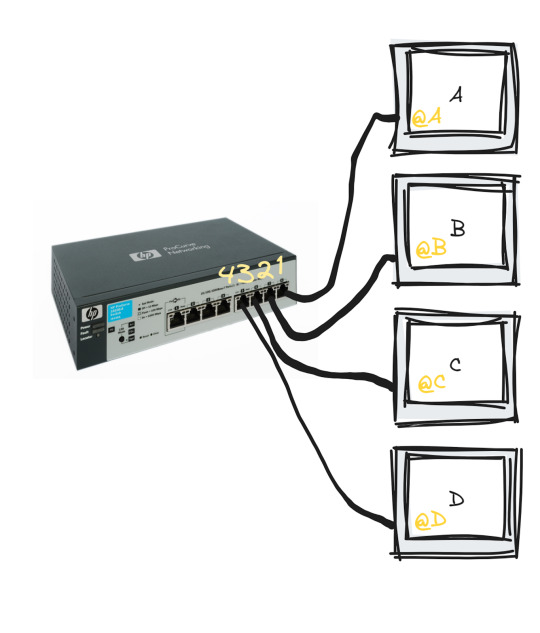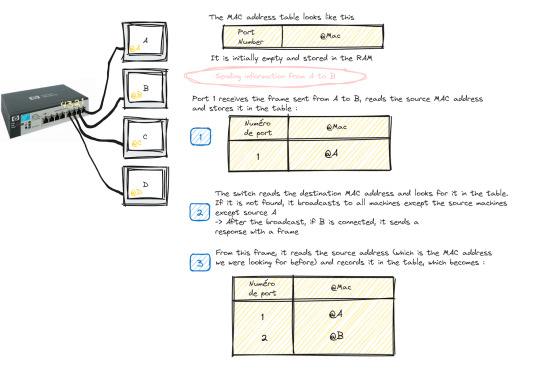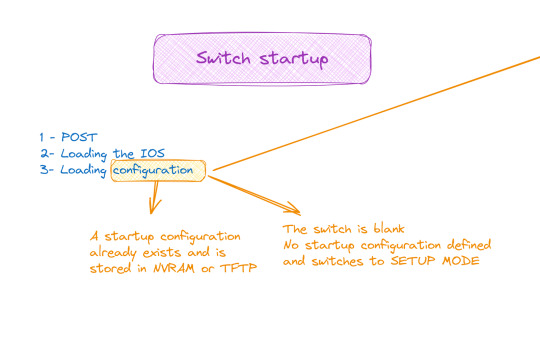#Python Networking
Explore tagged Tumblr posts
Text
Python Networking: Socket Programming for Students
In simple terms, Python networking involves the ability of Python programs to communicate over a network, be it through the internet, local area network (LAN), or any other network configuration. It enables applications to exchange data, share resources, and collaborate across different devices.
Getting Started with Sockets
At the heart of Python networking lies the concept of sockets. Think of a socket as a communication endpoint that allows two nodes on a network to communicate with each other. Just like plugging in a socket to power up a device, socket programming in Python involves creating these communication channels to send and receive data.
Error Handling
Like any programming task, Python networking isn't immune to errors. From connection issues to data transmission errors, various exceptions can occur during network communication. Proper error handling ensures that your program gracefully handles these unexpected situations, enhancing its reliability.
Real-World Applications
The applications of Python networking are virtually endless. From building chat applications and file sharing systems to implementing networked games and distributed computing platforms, the possibilities are vast. With the right skills, you can turn your networking ideas into reality.
Advanced Topics: Threading and Multiprocessing
To take your Python networking skills to the next level, delve into advanced topics like threading and multiprocessing. These techniques allow you to optimize performance, utilize multiple CPU cores efficiently, and design robust, scalable network applications.
Security Considerations
In an interconnected world, security is paramount. When developing network applications with Python, pay close attention to security considerations such as data encryption, authentication, and secure protocols. By implementing robust security measures, you can safeguard your applications against potential threats.
Best Practices
To become proficient in Python networking, adhere to best practices such as code modularization, documentation, and version control. Following industry standards and community guidelines ensures that your code is readable, maintainable, and easy to collaborate on with other developers.
Resources for Further Learning
Ready to embark on your Python networking journey? Explore online tutorials, documentation, and books dedicated to Python networking and socket programming. Join online communities, participate in forums, and leverage open-source projects to accelerate your learning and stay updated on the latest developments.
Conclusion
Python networking opens doors to endless possibilities in the realm of computer networking. By mastering socket programming and understanding the intricacies of network communication, you can develop powerful, scalable applications that leverage the power of interconnected systems.
Ready to master Python networking through socket programming? Enroll now in the LearNowx Python Training Course and unleash your potential in building robust network applications! Join us today and start your journey towards becoming a proficient Python developer.
0 notes
Text
Network switches
What’s a network switch ?
A switch is a device used in computer networks to connect multiple devices together within a single local area network (LAN). Its main role is to facilitate communication between different connected devices, such as computers, printers, servers, IP phones, etc.
It is a mini-computer which is made up of RAM, ROM, flash RAM, NVRAM, a microprocessor, connectivity ports and even an operating system.

RAM
RAM (Random Access Memory) contains the current configuration of the switch and temporarily stores the MAC address table, which is then processed by the microprocessor.
Microprocessor
The microprocessor is the heart of the switch, responsible for data processing, including switching and creating links between multiple devices.
External memories
External memories, such as flash RAM, ROM, and NVRAM (Non-Volatile RAM), store configuration files , different versions of the IOS , etc ...
Ports
The switch ports are the communication interfaces of the switch. There are several of them, generally 24 for a Cisco switch. Each port is associated with an LED which indicates its status and activity.

How does it work ?
Now how does a switch work to transfer information from one machine to another?
Suppose we have 4 machines: A, B, C and D connected to our switch in ports 1, 2, 3 and 4 as follows:

The switch only works with MAC addresses , so basically we have an empty MAC address table stored in RAM as soon as the switch starts up which looks like this :

Transmitting data from machine A to machine B happens in the following steps:
Machine A sends a frame to machine B
Once this frame arrives at port 1 (which is the one linked to A), the switch reads the source MAC address and stores it in the MAC address table
The switch reads the destination MAC address and looks for it in the table, if it is not in the table, it broadcasts to all the active machines connected to the switch except the source one.
If the port linked to the machine we want is active, it sends a response frame from which the switch reads the MAC address we were looking for (@B)
Once done, it records the MAC address of B in the table.

This process repeats until the switch reaches what is called "MAC address table stability", that is to say it knows all the MAC addresses of the connected machines and has no more need to broadcast.

Starting and configuring a switch
When it comes to booting a switch, the process is similar to that of a traditional computer system:
POST (Power-On Self Test): The switch performs proper functioning tests on all hardware.
Loading IOS (Internetwork Operating System): The switch operating system is loaded.
Loading the configuration.��At this stage we have two cases:
Either the switch already has a startup configuration defined and stored in NVRAM
Either the switch is blank and it is up to us to define the startup configuration when it goes to setup mode

Switch configuration

The configuration of a switch is done through different modes, such as user mode, privileged mode and global configuration mode, which allows access to specific configuration modes, such as interface mode, routing mode, line mode, etc.
And to do all this of course you must first connect the switch with the machine via the console cable and open a terminal emulator
💡 It should be noted that the only machine that can configure the switch is the one connected to it by a console cable, the others are only hosts.
#software#network switches#codeblr#code#css#html#javascript#java development company#python#studyblr#progblr#programming#comp sci#web design#web developers#web development#website design#webdev#website#tech#html css#learn to code
98 notes
·
View notes
Text
simulation of schizophrenia
so i built a simulation of schizophrenia using rust and python
basically you have two groups of simulated neurons, one inhibitory and one excitatory. the excitatory group is connected so they will settle on one specific pattern. the inhibitory group is connected to the excitatory group semi-randomly. the excitatory group releases glutamate while the inhibitory group releases gaba. glutamate will cause the neurons to increase in voltage (or depolarize), gaba will cause the neurons to decrease in voltage (hyperpolarize).
heres a quick visualization of the results in manim
the y axis represents the average firing rate of the excitatory group over time, decay refers to how quickly glutamate is cleared from the neuronal synapse. there are two versions of the simulation, one where the excitatory group is presented with a cue, and one where it is not presented with a cue. when the cue is present, the excitatory group remembers the pattern and settles on it, represented by an increased firing rate. however, not every trial in the simulation leads to a memory recall, if the glutamate clearance happens too quickly, the memory is not maintained. on the other hand, when no cue is presented if glutamate clearance is too low, spontaneous activity overcomes inhibition and activity persists despite there being no input, ie a hallucination.
the simulation demonstrates the failure to maintain the state of the network, either failing to maintain the prescence of a cue or failing to maintain the absence of a cue. this is thought to be one possible explaination of certain schizophrenic symptoms from a computational neuroscience perspective
14 notes
·
View notes
Text






i love these guys....
#mgpam#my gym partner's a monkey#my art#cartoon network#lupe toucan#windsor gorilla#slips python#ingrid giraffe#jake spidermonkey#adam lyon
7 notes
·
View notes
Text
youtube
Discover how to build a CNN model for skin melanoma classification using over 20,000 images of skin lesions
We'll begin by diving into data preparation, where we will organize, clean, and prepare the data form the classification model.
Next, we will walk you through the process of build and train convolutional neural network (CNN) model. We'll explain how to build the layers, and optimize the model.
Finally, we will test the model on a new fresh image and challenge our model.
Check out our tutorial here : https://youtu.be/RDgDVdLrmcs
Enjoy
Eran
#Python #Cnn #TensorFlow #deeplearning #neuralnetworks #imageclassification #convolutionalneuralnetworks #SkinMelanoma #melonomaclassification
#artificial intelligence#convolutional neural network#deep learning#python#tensorflow#machine learning#Youtube
3 notes
·
View notes
Text
#accounting#python#linux#machine learning#marketing#neural network#poster#programming#rpg maker#sales#digital painting#digital illustration#digital drawing#digitalmarketing#drawing#artists on tumblr#digital art#procreate#lineart#social marketing#social media#socialism#social anxiety#social issues#social justice#global news#trading view#news 1#stablecoins#no homepage
2 notes
·
View notes
Text
Trending Final Year Projects for 2025
Choose from the latest and most in-demand project topics across engineering and technology domains.
#cyber security projects for final year students#cyber security projects for final year#web development projects for final year#final year projects for cse#python projects for final year students#network security projects for final year students#cyber security final year project#data science final year projects#app development projects for final year#cloud computing projects for final year students#best web development projects for final year students#web development project for final year#final year project for cyber security#cloud computing final year project#aws projects for final year github#best computer science projects for final year#best computer science final year projects#best final year projects for it students#best major project for cse#best project for computer science final year#best projects for it final year#best python projects for final year students#cloud based final year projects#cloud computing based projects for final year#cloud computing projects final year#cloud projects for final year students
0 notes
Text
#AI Career#BCA to AI#Machine Learning for Beginners#Python for AI#AI Projects Portfolio#Data Science Fundamentals#TensorFlow Tutorials#Deep Learning Essentials#AI Internships#Building AI Resume#AI Communities & Networking#Math for AI#NLP Projects#Image Recognition Guide
0 notes
Text
Comprehensive Full Stack Development Course in Madurai
Are you looking to become a proficient full stack developer? This Full Stack Development Course in Madurai is designed to transform you into a versatile and job-ready developer skilled in both front-end and back-end technologies. Over the duration of the course, you will master essential programming languages, frameworks, and tools to create fully functional, dynamic websites and applications from scratch. This course covers popular front-end technologies like HTML, CSS, JavaScript, and React, along with server-side development using Node.js, Express.js, and MongoDB.
Website : https://tandeminformatics.com/
#Software Courses: Software Courses#Animation Courses#IT Training#Data science and Data Analytics#Full stack development#Software Testing#C#C++#Java#Dotnet#Python#Networking and Cloud#Web development. Animation Courses: Graphic Designing#UI UX Design#2D & 3D Animation#Game Designing#Visual Effects#Digital Marketing.
0 notes
Text



heres some mgpam human stuff
#my art#cartoon network#my gym partner's a monkey#mgpam#jake spidermonkey#adam lyon#lupe toucan#windsor gorilla#ingrid giraffe#slips python#ik no one cares about this show but... oh well....i lieks my humans
4 notes
·
View notes
Text
youtube
Object Classification using XGBoost and VGG16 | Classify vehicles using Tensorflow
In this tutorial, we build a vehicle classification model using VGG16 for feature extraction and XGBoost for classification! 🚗🚛🏍️
It will based on Tensorflow and Keras
What You’ll Learn :
Part 1: We kick off by preparing our dataset, which consists of thousands of vehicle images across five categories. We demonstrate how to load and organize the training and validation data efficiently.
Part 2: With our data in order, we delve into the feature extraction process using VGG16, a pre-trained convolutional neural network. We explain how to load the model, freeze its layers, and extract essential features from our images. These features will serve as the foundation for our classification model.
Part 3: The heart of our classification system lies in XGBoost, a powerful gradient boosting algorithm. We walk you through the training process, from loading the extracted features to fitting our model to the data. By the end of this part, you’ll have a finely-tuned XGBoost classifier ready for predictions.
Part 4: The moment of truth arrives as we put our classifier to the test. We load a test image, pass it through the VGG16 model to extract features, and then use our trained XGBoost model to predict the vehicle’s category. You’ll witness the prediction live on screen as we map the result back to a human-readable label.
You can find link for the code in the blog : https://ko-fi.com/s/9bc3ded198
Full code description for Medium users : https://medium.com/@feitgemel/object-classification-using-xgboost-and-vgg16-classify-vehicles-using-tensorflow-76f866f50c84
You can find more tutorials, and join my newsletter here : https://eranfeit.net/
Check out our tutorial here : https://youtu.be/taJOpKa63RU&list=UULFTiWJJhaH6BviSWKLJUM9sg
Enjoy
Eran
#Python #CNN #ImageClassification #VGG16FeatureExtraction #XGBoostClassifier #DeepLearningForImages #ImageClassificationPython #TransferLearningVGG16 #FeatureExtractionWithCNN #XGBoostImageRecognition #ComputerVisionPython
#artificial intelligence#convolutional neural network#tensorflow#deep learning#python#machine learning#Youtube
0 notes
Text
Keep NUST's Network Running Smoothly: Network Administrator Opportunity! - March 2025
The National University of Science and Technology (NUST) is seeking a skilled and proactive Network Administrator to join their Information and Communication Technology Services (ICTS) Department! If you’re passionate about maintaining and optimizing network infrastructure, ensuring seamless operations, and providing excellent technical support, this is an excellent opportunity. About the…

View On WordPress
#art#Bulawayo Jobs#CCNA#Comp TIA#Computer Science Jobs#Electronic Engineering Jobs#Hot Zimbabwe Jobs#ICT Jobs#Information Technology Jobs#JNCIA#Job Opportunity#Linux#MCSA#MCSE#Network Administrator Jobs#Networking Jobs#NUST Jobs#open-source#Power Shell#python#RHCE#technology#University Jobs#VMware#Zimbabwe Jobs
0 notes
Text
#accounting#python#linux#machine learning#marketing#neural network#poster#programming#rpg maker#sales#digitalmarketing#digital illustration#digital drawing#digital art#digital painting#drawing#artists on tumblr#procreate#lineart#social marketing#social media#socialism#social anxiety#social issues#social justice#global news#stablecoins#trading view#news 1#no homepage
3 notes
·
View notes
Text
instagram
#EducationForAll#SkillDevelopment#CareerGrowth#LearnAndEarn#OnlineLearning#DataAnalytics#DataScience#BigData#CloudComputing#FullStackDevelopment#DigitalMarketing#CreativeDesign#ProgrammingLanguages#Networking#SQL#Python#Java#PowerBI#AWS#Azure#GoogleCloud#MachineLearning#DeepLearning#ChristmasOffer#HolidayDeals#DiscountOnCourses#ChristmasSpecial#LearnAt20Off#ILRAcademy#ILRTraining
1 note
·
View note
Text
Final Year Projects That Impress and Inspire
Stand out with smart, practical final year projects in tech, science, and engineering streams.
#cyber security projects for final year students#cyber security projects for final year#web development projects for final year#final year projects for cse#python projects for final year students#network security projects for final year students#cyber security final year project#data science final year projects#app development projects for final year#cloud computing projects for final year students#best web development projects for final year students#web development project for final year#final year project for cyber security#cloud computing final year project#aws projects for final year github#best computer science projects for final year#best computer science final year projects#best final year projects for it students#best major project for cse#best project for computer science final year#best projects for it final year#best python projects for final year students#cloud based final year projects#cloud computing based projects for final year#cloud computing projects final year#cloud projects for final year students
0 notes
